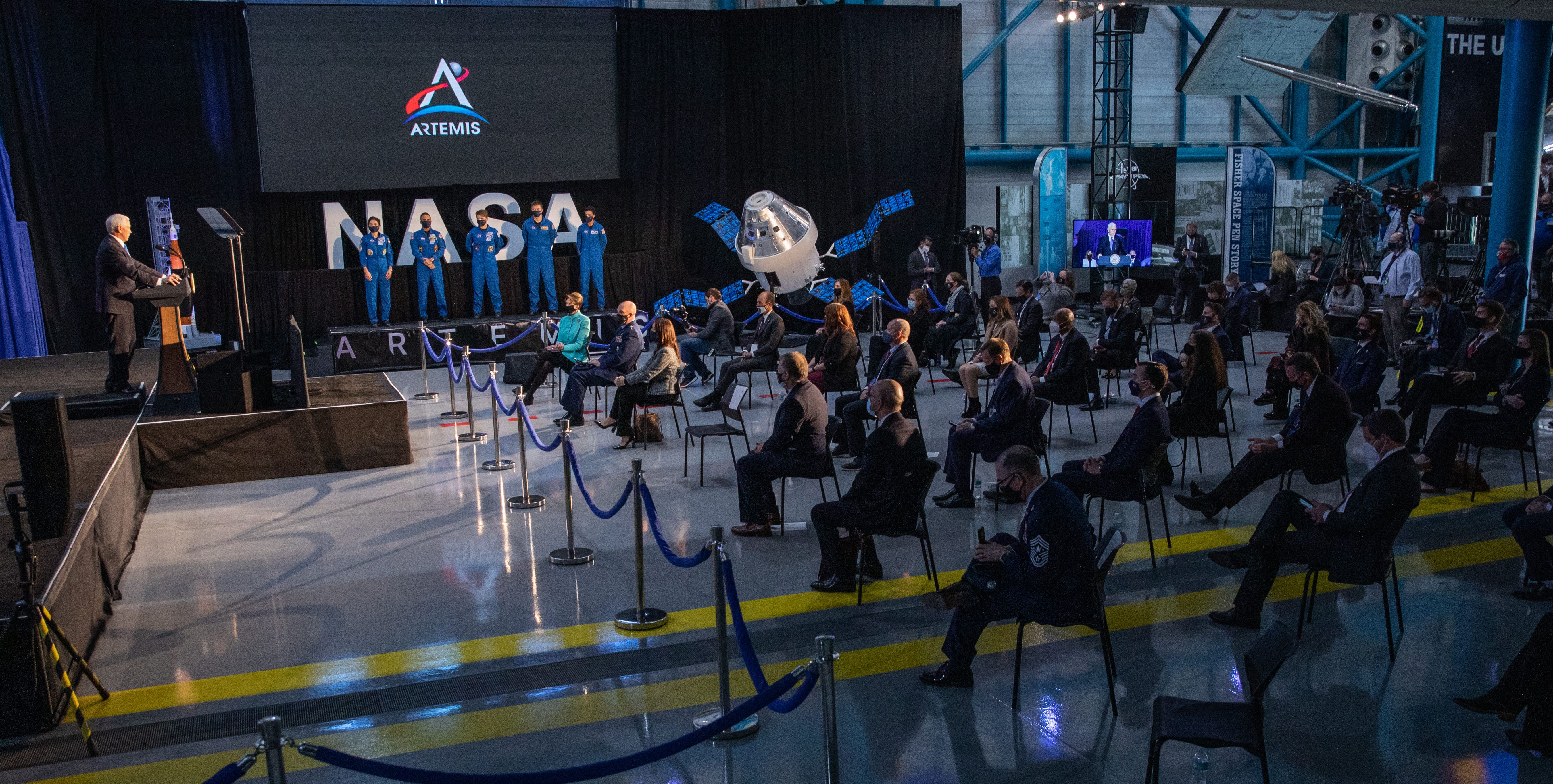Artemis Accords: Towards New Rules for the Exploitation of Space

The Accords and Moon Exploration
The Artemis Accords are a set of rules for civilian exploration and use of space, announced by NASA with the support of the U.S. State Department in May 2020. It is a non-binding political declaration to which individual states may accede and covers areas such as information exchange, cooperation, and the extraction and use of mineral resources. The U.S. hopes that the principles it contains will become commonplace and will lead to the development of a practice that will enable the creation of customary international law binding all states.
The accords are intended to serve as a common reference point for implementing bilateral agreements concluded by NASA with its partners from other countries in order to implement the agency’s 2017 Artemis international space exploration programme. The goal is to send humans back to the moon by 2024, which would be a step on the way to a manned mission to Mars. Private enterprises in the American space sector, other countries, and the European Space Agency (ESA), which also involves Poland, participate in the Artemis programme.
Although Artemis was launched by NASA during President Donald Trump’s tenure, it is not seen as political and manned space exploration enjoys bipartisan support. Due to the change in NASA’s overall priorities, it is rather likely that the timeframe for Artemis will be extended, returning to the original assumption of landing on the Moon again in 2028, among other activity.
International Cooperation
After presenting the proposal in May, NASA and the State Department began talks with other space-related agencies and ministries from countries interested in concluding the accords to agree on the final content of the document. On 13 October 2020, the agreement was signed by the U.S. and seven other countries—Australia, Canada, Japan, the United Arab Emirates, the UK, Italy, and Luxembourg (the latter three are among the 22 ESA members). Ukraine joined in November, and Brazil expressed interest in December. So far, nine countries are signatories to the accords. It is possible that other ESA members will decide to join. The ESA itself, despite its participation in Artemis, has not yet expressed interest in joining the agreement because doing so requires a common position by all its members. The ESA also indicates that the accords are of an interstate nature.
Controversies and Challenges
A few countries with advanced space programmes have not signed the accords yet. China has been critical of the initiative, possibly influenced by a 2011 U.S. law prohibiting NASA, among others, from cooperating with Chinese entities. China, along with the equally critical Russia, argues that the U.S. and a narrow group of allies seeks to impose their vision of exploitation of space while the appropriate solution should be developed within the framework of the UN Committee on the Peaceful Uses of Outer Space, established in 1959. India has not taken a position.
Despite the pressure or scepticism of some major players, the prospects of the U.S. entering into negotiations within the framework of the UN committee, and even more so achieving agreement, do not seem realistic. Developing countries would then demand redistribution of the benefits gained though extraction of space resources, but this has been strongly opposed by the U.S. and developed countries for years.
The allegations of critics of the accords relate mainly to three issues. The first one is the concept of safety zones. The accords allow the creation of such zones in areas of celestial bodies where mining or research activities are carried out. Other signatories are obliged to coordinate their activities in such zones with the countries that set them in order to avoid disrupting them. According to Russia, this is an attempt by states to extend sovereignty to celestial bodies, contrary to the 1967 Outer Space Treaty. However, the creation of safety zones does not have to be equal to the appropriation of a given area: on Earth, such a system is permissible, for example, for offshore oil rigs, which are also not subject to sovereignty in accordance with the Convention on the Law of the Sea of 1982. The Artemis accords also stipulate that the usage of the zones is to be carried out in accordance with the principle of free access to all areas of celestial bodies provided for in the 1967 treaty. On the other hand, the reliance on national laws as regards the rules for maintaining safety zones can lead to abuses by states. Thus, while the very concept of zones is not inconsistent with the 1967 treaty, any assessment of their legality will depend on practise.
The second disputed issue is the possibility of appropriation of resources extracted in space. The 1967 treaty is silent on it, but the 1973 Moon Treaty prohibits it, stating that the natural resources of the Moon are the “common heritage of mankind”. That treaty envisages the creation of a legal regime governing the exploitation of lunar resources for the benefit of all state parties; however, this regime has not been worked out yet. Still, the claim of violation of the Moon Treaty is flawed, as only 18 out of 193 UN states, almost exclusively developing ones, are parties to it. As a consequence, it does not create obligations for the U.S., Russia, or China (or Poland for that matter). It also does not apply to celestial bodies other than the Moon.
The third source controversial area is the silence of the Artemis Accords on the question of control of the activities of private entities in space. However, this problem is exaggerated. Each state party to the 1967 treaty (and thus also the U.S.) has jurisdiction over the objects registered there and their crews. It must therefore ensure that the latter respect the international agreements that bind each state, although the treaty does not impose a specific solution. In the event of damage caused by such objects or persons, the state that released the object into space or from whose territory it was launched is internationally liable. These rules also apply to the activity of private entities undertaken on the basis of the Artemis Accords, although the enforcement of control and damages from the U.S. may raise practical difficulties.
Conclusions
Despite the change of U.S. president, it should be expected that the Biden administration will not, in principle, depart from the previously adopted model for the implementation of the Artemis programme, including support for the Artemis Accords. Although the accords do not contradict international law, some provisions may be applied in a way that would violate them. Much depends on practise in space, especially by the U.S. It is necessary for the international community to monitor it in terms of compliance with existing space law, especially the 1967 treaty. From the perspective of Poland, striving for closer bilateral cooperation with NASA, accession to the Artemis Accords may be beneficial and allow influence on the shaping of new space exploitation rules, together with allies.
Developing clear rules for exploitation of celestial bodies would reduce the economic and legal risks associated with such activities, which is especially important for the U.S. where the space programme now is largely carried out by private entities and guided by business logic. It can therefore be assumed that China and Russia will try to delay this process to prevent consolidation of the U.S. advantage in the competition for space resources. It is in these states’ interest to prolong the uncertainty because, unlike the U.S. or the EU, their space sector is much more state-centred. They will therefore continue to insist on the settlement of the matter in the UN Committee on the Peaceful Uses of Outer Space, despite the limited prospects for success of such negotiations. In the longer term, they may seek to create an alternative set of principles to those proposed by the U.S. and try to garner wider support for them. However, the possible emergence of several competing legal regimes would result in tensions and could spark conflicts over access to resources and in other areas.



